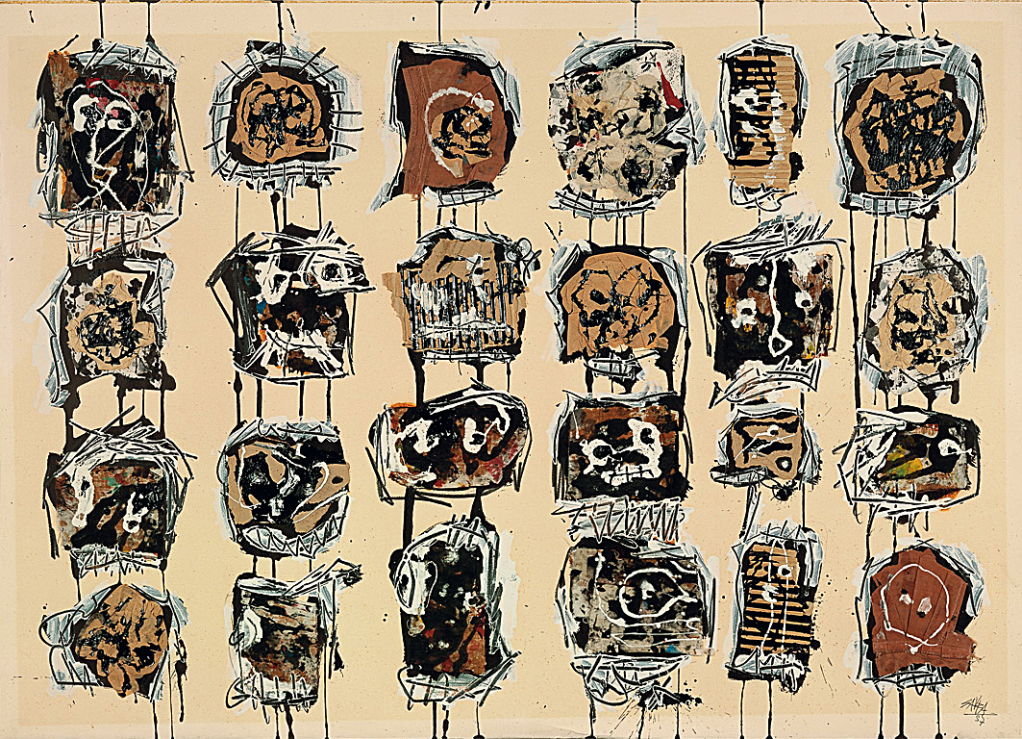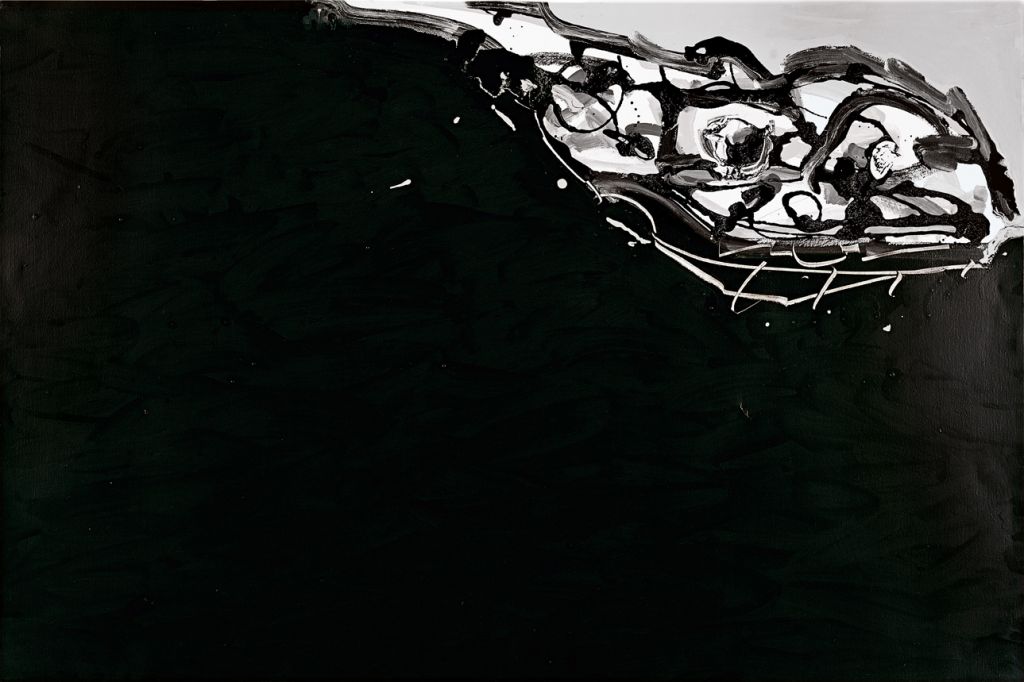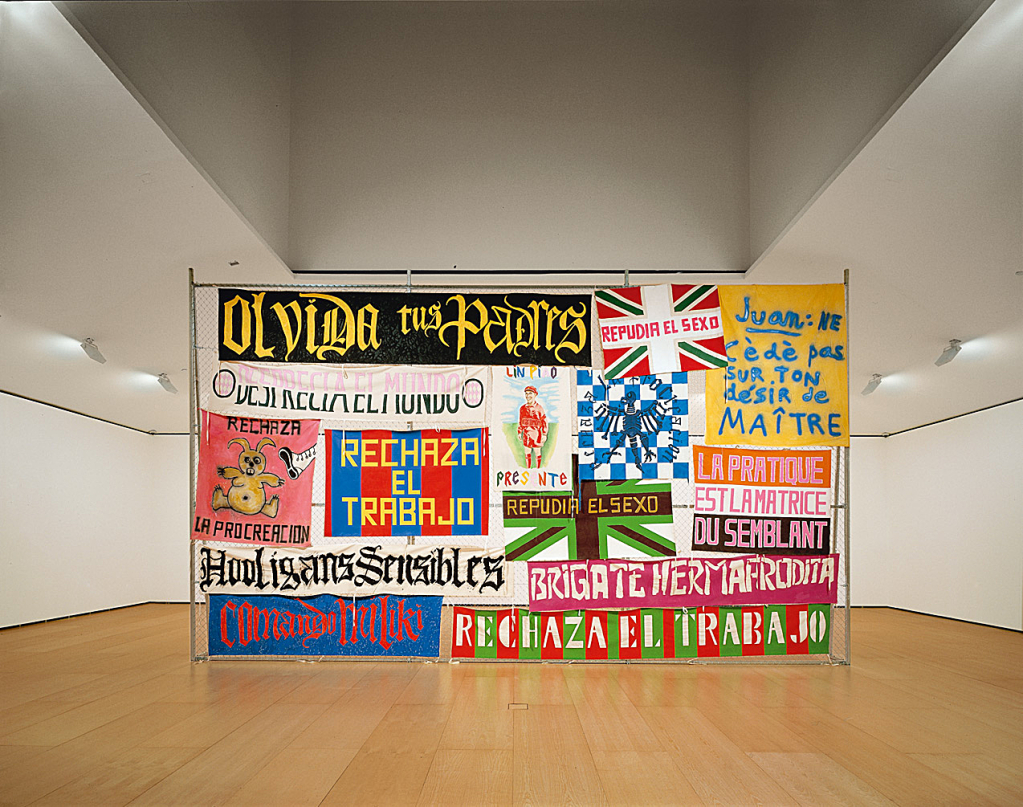Karl-Johann Strasse II
1997Oil on canvas202.3 x 407.5 x 7 cm
Antonio Saura was struck at an early age both aesthetically and emotionally by the work of Diego Velázquez and Francisco de Goya, two of Spain's greatest masters. But as a painter setting out in the repressive political and cultural climate of early-1950s Spain, he sensed that this grand tradition had to be wrested from the grasp of Francoist culture, which was setting it up in opposition to contemporary European Art Informel. Paradoxically, it was by subjecting high Spanish tradition to the most radical new modes of painting that Saura managed to free it and give it a powerful new life: he took the gestural painting associated with Art Informel and American Action painting and applied it to the figure and to traditional Spanish themes. After a short period in Paris in the 1950s, during which he briefly associated with the Surrealists, Saura returned to Spain and founded the group El Paso (1957-60), which in its work and in its eponymous publication promoted the advanced forms of painting being developed elsewhere in Europe and the United States. (Saura was one of the first to champion Jackson Pollock in Spain.) During this period Saura limited his palette to white and black and began the thematic series that would occupy him for much of the rest of his career, including the "Crucifixions", "Women", "Nudes", "Crowds", "Portraits", and "Imaginary Portraits" (the latter depicting historical Spanish figures such as Goya and Philip II). Saura was highly versatile: besides painting, he produced prints, illustrated books, and stage sets, and was also a prolific writer.
The monumental Karl-Johann Strasse II, painted the year before Saura's death, represents one of the artist's last iterations on the theme of the Crowd. The concentrated mass of heads with emphatic features conjures up both a vast wall of boulders and the serried ranks of skulls in a charnel house. Saura explained what he was trying to do in the "Crowds" by saying: "I have attempted to unify countless approaching disembodied faces, to create a dynamic arrangement of groups of antiforms, each drawn into dynamic association with one another, as if, like some biological phenomenon, they were obeying a law of attraction and repulsion designed to generate a feeling of continuity."[1] The title of this work is an allusion to Edvard Munch's Evening on Karl-Johan Street (1892), which features a stream of people with masklike faces pushing along the pavement. (Karl-Johann Strasse I, one of Saura's earliest "Crowds", is now preserved in the Archives Antonio Saura, Geneva.) Saura also cited Pollock's allover painting technique, as well the works of Goya and James Ensor, as influences on his Crowds.
Note:
1. Saura, "Iniciales," in Antonio Saura: Peintures, 1956-1985 (Geneva: Musée Rath, 1989), p. 18; Antonio Saura par lui-même (Milan: 5 Continents Editions, 2009), p. 131.
Source(s):
Rainer Michael Mason. "Antonio Saura." In Guggenheim Museum Bilbao Collection. Bilbao: Guggenheim Museum Bilbao; Madrid: TF Editores, 2009.
Original title
Karl-Johann Strasse II
Date
1997
Medium/Materials
Oil on canvas
Dimensions
202.3 x 407.5 x 7 cm
Credit line
Guggenheim Bilbao Museoa






